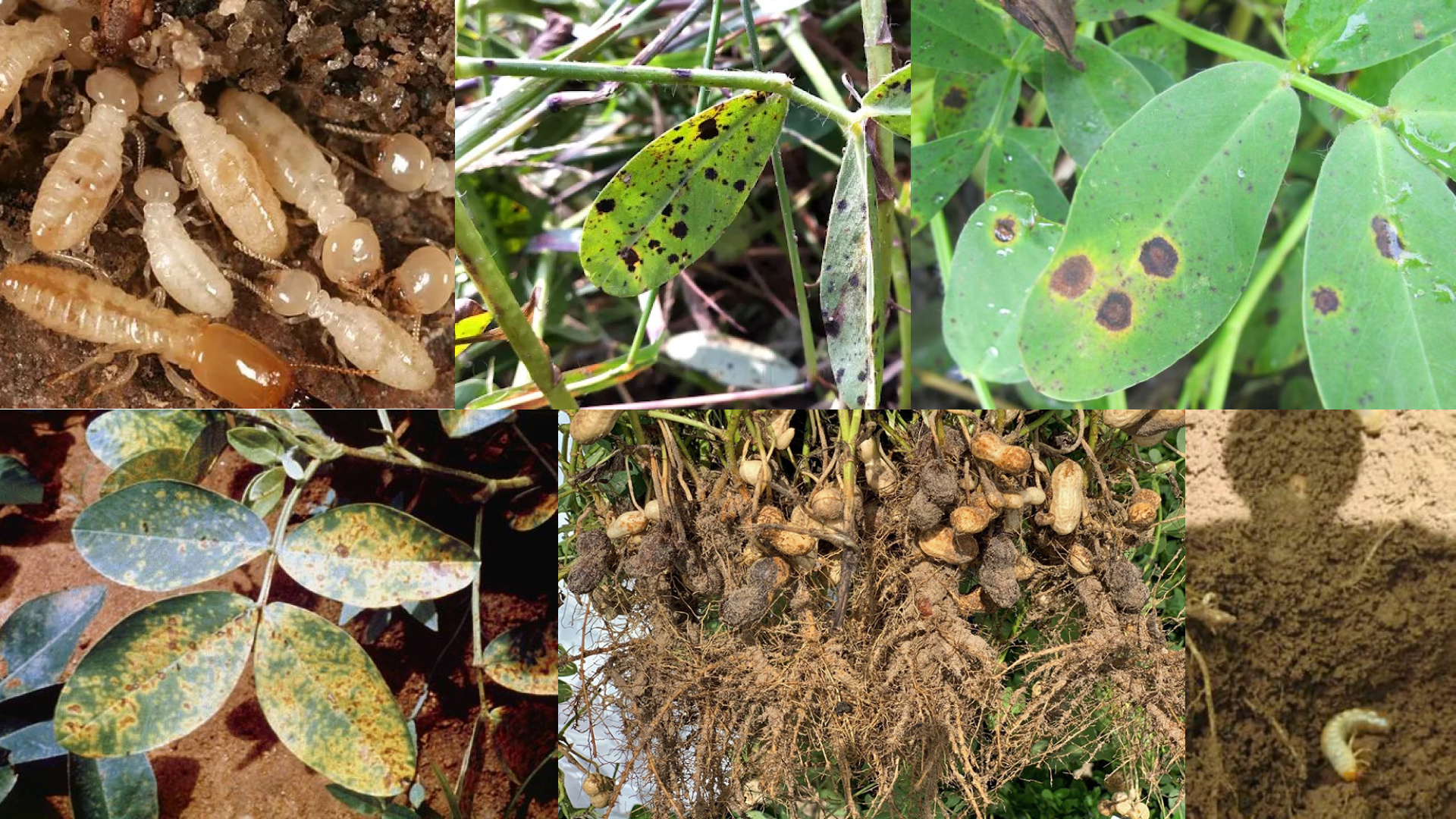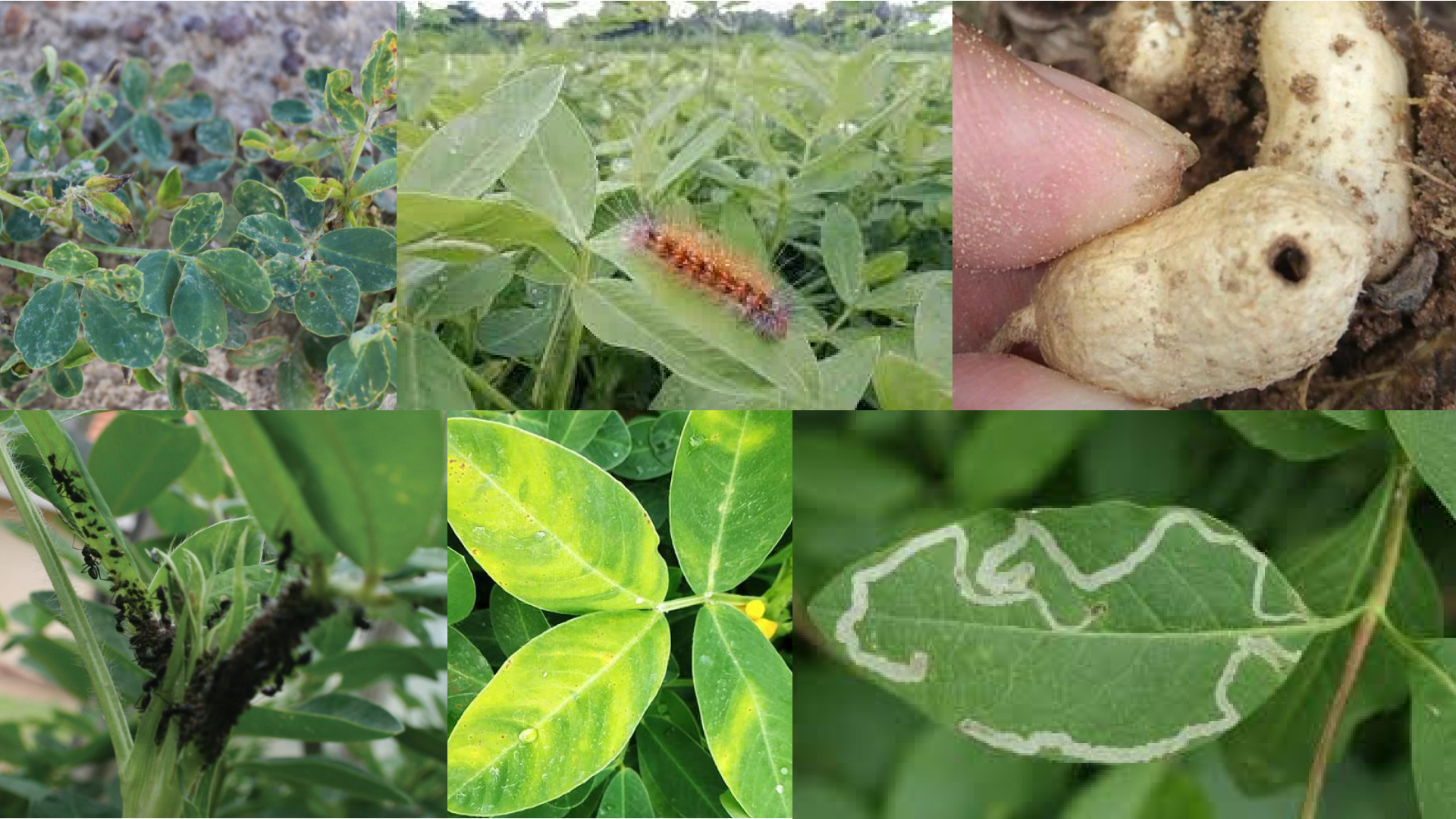Smart Groundnut Farming: Simple Steps for Higher Yields
Introduction of Groundnut
Groundnut, also called peanut, is an important oilseed crop grown widely across India. It is a major source of edible oil and protein for both people and animals. Groundnut seeds are eaten roasted or boiled, and groundnut oil is used for cooking in many Indian homes. The crop also provides valuable fodder for livestock. Groundnut farming helps lakhs of Indian farmers earn their livelihood and supports the country’s edible oil industry.
Groundnut Synopsis
Botanical Name: Arachis hypogaea
Common Names: Groundnut (English), Verusenaga (Telugu), Moongfali (Hindi), Nilakadalai (Tamil), Nelagadale (Kannada)
Crop Season: Mainly Kharif (June–July sowing, harvested in October–November); also grown in Rabi season in some areas with irrigation.
Top Groundnut-Growing States: Gujarat, Rajasthan, Tamil Nadu, Andhra Pradesh, Karnataka, Madhya Pradesh
Area & Production
Groundnut is cultivated on about 4.8–6.7 million hectares in India, producing 10–10.3 million tonnes every year. The crop is a lifeline for many farmers and is very important for India’s edible oil needs.
Standard Operating Procedure (SOP) of Groundnut
To get a good harvest, better fruit quality, and higher income, farmers must follow a proper step-by-step method. That’s why this SOP (Standard Operating Procedure) is prepared.
1. Best Soil and Climate for Groundnut
Soil: Grows best in well-drained, loose, sandy loam or red soils. Avoid heavy black or clay soils.
Climate: Needs warm and moderately humid weather. Ideal temperature is 25–30°C. Requires 500–1000 mm rainfall. Crop is sensitive to waterlogging.
2. Varieties of Groundnut
Popular Varieties: Kadiri-2, Kadiri-3, JL-24, TMV-2, GG-20, TAG-24, ICGV-91114, Girnar 4, Girnar 5 (high oleic).
Choose varieties as per local climate, crop duration, disease resistance, and market demand.
For Telangana and Andhra Pradesh: Kadiri-6, Narayani (TCGS 29), Dharani (TCGS 1043), Tirupati 1 (TCG 1704), Tirupati 4 (TCGS 30), Rohini (TCGS APNL 913), ICGV 00350, Kadiri-9, Kadiri Haritandhra, JL-24, TMV-2, TAG-24, TCGS-1694
Other Noteworthy Types: AK12-24, OG52-1, TAG 24 (mature earlier, good for high yield and disease resistance). Indian Main Types: Runner (large seed), Virginia (very large, preferred for roasting and confectionery).
3. Field Preparation
- Plough the field 2–3 times for fine tilth.
- Remove weeds and old crop remains.
- Mix 8–10 tons of well-rotted FYM per acre before last ploughing.
- Prepare flat beds or broad ridges for good drainage.
4. Seed Rate & Treatment
Seed Rate: 80–100 kg per acre for Unshelled; 100–120 kg/acre for small seeds.
Seed Treatment:
- Treat seeds with Thiram or Carbendazim @ 2–3 g/kg seed to protect from diseases.
- For insect protection, use Imidacloprid @ 2 ml/kg seed.
- Dry seeds in shade before sowing.
5. Sowing Time & Method
Kharif: Sowing from June to July, with the start of the monsoon.
Rabi: November–December in irrigated areas.
Spacing: 30–45 cm (row to row) × 10–15 cm (plant to plant).
Depth: Sow seeds 4–5 cm deep.
6. Fertilizer Dosage & Timing
Basal Dose (per acre):
- Nitrogen (N): 10–12 kg (22–26 kg Urea)
- Phosphorus (P2O5): 30–40 kg (185–250 kg SSP)
- Potash (K2O): 20–25 kg (32–40 kg MOP)
Apply gypsum @ 200–250 kg/acre at flowering for better pod filling. Adjust fertilizer as per soil test and crop stage.
7. Water Management
- First irrigation after sowing if there is no rain.
- Next irrigations at 10–15 day intervals.
- Critical stages: flowering, peg formation, and pod development.
- Avoid waterlogging at all times.
8. Weed Management
- First weeding 20–25 days after sowing.
- Second weeding 40–45 days after sowing.
- Use a pre-emergence herbicide like Pendimethalin @ 1 litre/acre within 2 days of sowing.
9. Harvesting and Processing
- Harvest 90–120 days after sowing, when leaves turn yellow and pods are mature.
- Uproot plants, shake off soil, and dry pods in the sun for 5–7 days.
- Store in a clean, dry, and ventilated place to prevent fungus.
10. Yield
| Method | Yield (quintals/ha) |
|---|---|
| Improved Varieties | 18–25 |
| Local Varieties | 10–15 |

